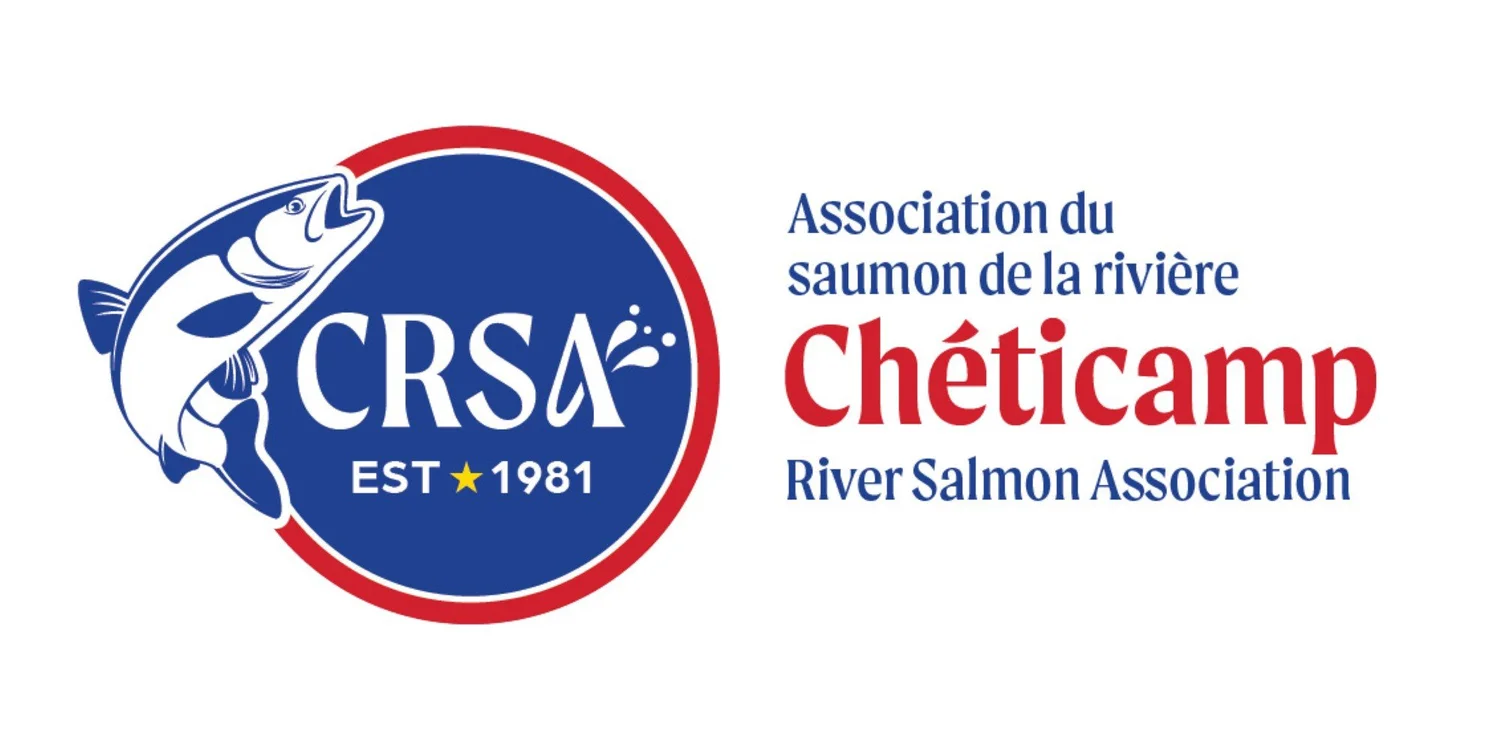Looking back at our 2017 field season
We had another busy and productive field season here in Cheticamp this year. Thanks to the continued support and financial help from our project partners and funders, the Cheticamp River Salmon Association was able to continue work on important existing projects as well as take on some exciting new work in 2017.
In particular, we would like to thank the following for helping make this another successful year: Fisheries and Oceans Canada (specifically funding from DFO's Recreational Fisheries Conservation Partnership Program and staff from the Conservation office in Cheticamp for their inkind contributions to our water temperature study), the Atlantic Salmon Conservation Foundation, Nova Scotia Salmon Association's NSLC Adopt-a-Stream Program, Parks Canada (specifically, staff at Cape Breton Highlands National Park for co-managing our Cheticamp River project and making important inkind contributions), Sage Environmental Program, the Cheticamp branch of the RBC, Destination Cape Breton Association, the Atlantic Salmon Federation (inkind contributions from Lewis Hinks, Director of Programs for Nova Scotia), and the Clean Foundation and Service Canada's Canada Summer Jobs Program for help hiring summer staff.
Below are some highlights of the work we accomplished this year:
2017 marked our fourth year of habitat restoration work on the lower Cheticamp River, undertaken in partnership with Cape Breton Highlands National Park (CBHNP). This year our habitat restoration team installed thirteen new instream structures (a combination of rock deflectors and rock retarding bars, or groynes) and carried out maintenance work to two existing structures. The structures were installed at three works sites, above Fence Pool, below Fence Pool, and at Petit Cap (Gauge station). The restoration plan, designed by stream restoration specialist and former DFO Habitat Coordinator Charles MacInnis, called for the installation of structures at key locations to encourage the river to gradually narrow and deepen through overwidened sections, process bedload in locations where extreme bedload deposition had occurred, and improve fish passage through areas where divided thalwegs and mid-channel diagonal bars restricted upstream migration of Atlantic salmon and trout.
Front end loader moving rock to work sites below Fence Pool
Charles MacInnis giving instructions to excavator operator during installation of one of the structures above Fence Pool
One of the completed rock deflectors above Fence Pool, with excavator busy on another structure further upstream
One of the many ways that Parks Canada staff at Cape Breton Highlands National Park contributed to project on the Cheticamp River was by capturing before and after drone footage of the project work sites. The aerial photos and video are part of our efforts to document project achievements and evaluate the effectiveness of the instream work.
Geomatics Technician Michée Lemieuxwith CBHNP flies a drone over project work sites prior to the start of instream work.
Sample aerial photo captured with CBHNP drone, this one showing some of the instream structures installed above Fence Pool
In addition to the instream work on the Cheticamp River, the CRSA also partnered with CBHNP to carry out a water temperature study on the Cheticamp River and the Cheticamp reservoir (source of the Cheticamp River and part of NS Power's Wreck Cove hydroelectric project). Both were interested in better understanding water temperatures on the Cheticamp River and at the reservoir as salmonid fish (including Atlantic salmon and trout) are sensitive to water temperature as it affects the availability of dissolved oxygen in the water and the metabolic rates of the fish. The combination of climate changes and unnaturally overwidened sections of the lower Cheticamp River – locations that result in warmer water temperatures due to the shallow depths, as well as insufficient depths for fish passage – has raised concerns about how water temperatures may be affecting the health of Atlantic salmon and native trout species on the Cheticamp River.
The CRSA installed submersible probes to collect water temperature data at various locations on the Cheticamp River and at different depths through the water column in the reservoir.The CRSA also hired Gabrielle McLaughlin, a recent biology graduate from St. Francis Xavier University, to help carry out the study and prepare a report (still in progress) of the findings.
Gabrielle MacLaughlin and Jeremy Camus - summer student with the CRSA - retrieving water temperature data from one of the data loggers installed on the Cheticamp River
Gabrielle MacLaughlin and Kayla Blackwood - crew supervisor for CRSA's Habitat Restoration Crew - deploying temperature loggers at Cheticamp reservoir. Thanks to DFO for providing access to a boat and operator for this part of our project.
While not working onthe Cheticamp River, the CRSA was also busy getting work done on a number of smaller watercourses in and around Cheticamp. For example, Kayla Blackwood, a 1st year NSCC Natural Resources Environment Technology student, was working as the CRSA's Habitat Restoration Crew Supervisor, leading a variety of projects on Aucoin Brook, a tributary of the Cheticamp River. Kayla and her one man crew were able to get an impressive amount of work done, including removing blockages, carrying out maintenance to existing instream structures (mostly digger logs and deflectors), installing brush mats, helping with riparian planting, and conducting water quality monitoring. In addition to the work on Aucoin Brook, the CRSA also carried out some important fish passage work on Fiset Brook, and began fish passage work on Farm Brook (to be completed in 2018).
Kayla Blackwood and Jeremy Camus completing a site visit as part of the CRSA's ecological monitoring program
Jeremy and Kayla demonstrating how to install a brush mat as part of a site visit with the Clean Foundation
Check back for updates on the results of the water temperature study as well as plans for next year. Hopefully we can continue to work with our partners to take on more interesting and important projects!









